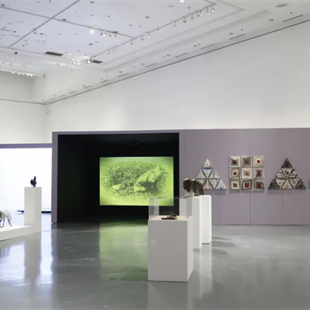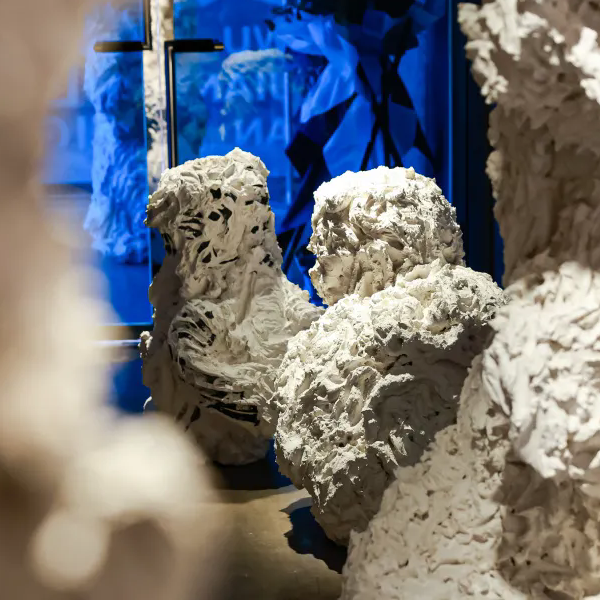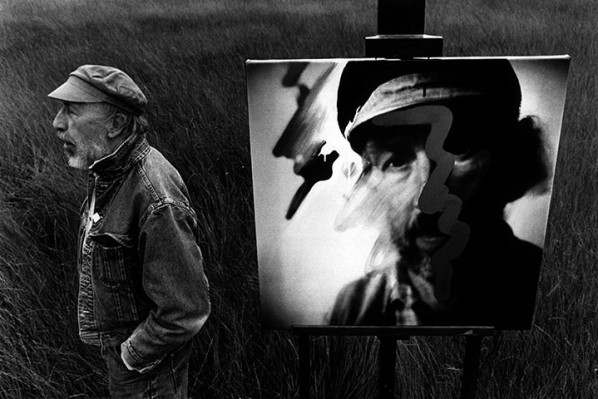
Hamilton in a field near his Henley home with a painting from his 1992 Tate show; Photograph John Reardon/ The Guardian
Richard Hamilton, the most influential British artist of the 20th century passed away aged 89 on September 13th, 2011. His death was announced with tremendous sadness by the Gagosian Gallery, which represents his work. Acknowledged as the Father of Pop art, Hamilton was actively working on various fields of art and has exerted great influence on the art of today.
Artdaily.org
He was a pioneering artist of unparalleled skill, invention and lasting authority. Hamilton's fascination with the authenticity of the image in contemporary society, and the implication this has in political and moral terms has held him at the vanguard of modern art. His influence on subsequent generations of artists continues to be immeasurable.
Jonathan Jones, The Guardian
Hamilton saw our future coming. He even designed a computer as a readymade artwork in the early days of digital. He saw and accepted the way technology changes the human condition. Yet he cared about, and fought for, the human ghost in the machine. That is what makes him a great artist.
Asked recently about being called the father of Pop art, Hamilton said it was not a term he aligned himself with, reported by BBC News
While I was interested in the pop phenomenon, I never associated myself with the term, which I used to describe Elvis Presley and rather vulgar American imagery of ice cream cones or hamburgers.
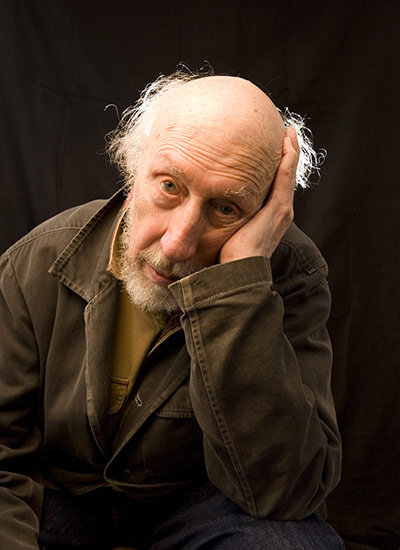
Richard Hamilton, photographed at the Serpentine Gallery in London last year
Despite having left school with no formal qualifications in his earlier years, Hamilton managed to discover his ability for draughtsmanship and began to do painting at evening classes at St Martin's School of Art which later led to his entry into the Royal Academy Schools. After another two years at the Slade School of Art, University College, London, Hamilton began to have his work exhibited at the Institute of Contemporary Arts (ICA) where he also produced posters and leaflets and teaching at the Central School of Art and Design. The post at the ICA also afforded Hamilton the time to further his research on Duchamp, which resulted in the 1960 publication of a typographic version of Duchamp's Green Box. As a member of the Independent Group, Hamilton played a leading role in the early Pop movement, predating Andy Warhol's experiments with Pop themes by nearly a decade.
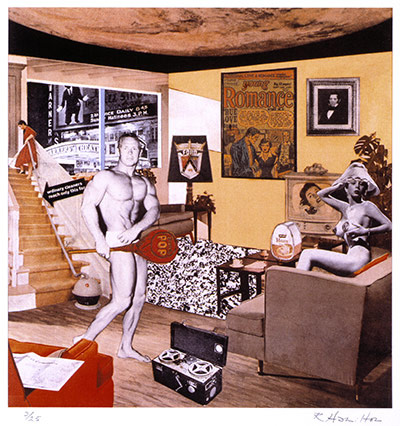
Hamilton's Just What Was It That Made Yesterday's Homes So Different, So Appealing (1992)
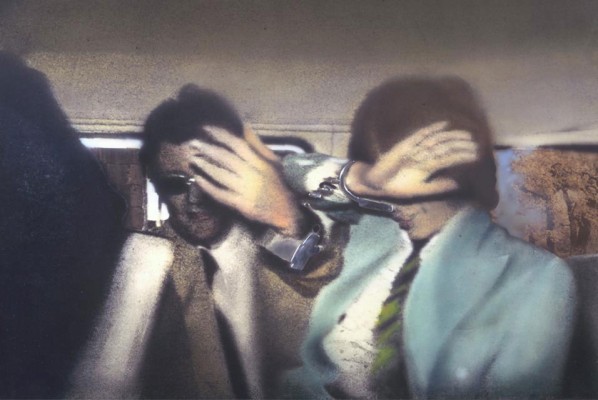
Richard Hamilton, Swingeing London 67 (f) 1968-9. Acrylic, collage and aluminium on canvas
The first exhibition of Hamilton's paintings was shown at the Hanover Gallery, London, in 1955. In 1993 Hamilton represented Great Britain at the Venice Biennale and was awarded the Golden Lion. Major retrospective exhibitions have been organized by the Tate Gallery, London, 1970 and 1992, Solomon R. Guggenheim Museum, New York, 1973, MACBA, Barcelona, Museum Ludwig, Cologne, 2003, and the Neue Nationalgalerie, Berlin, 1974.Some of the group exhibitions Hamilton has participated in include: Documenta 4, Kassel, 1968; São Paulo Art Biennial, 1989; Documenta X, Kassel 1997; and Shanghai Biennale, 2006. In 2010, the Serpentine Gallery presented Hamilton’s ‘Modern Moral Matters’, an exhibition focusing on his political and protest works which were shown previously in 2008 at Inverleith House, Royal Botanic Garden in Edinburgh. Dublin City Gallery The Hugh Lane is currently showing a joint retrospective exhibition of both Hamilton's and Donagh's work called Civil Rights etc., which will be shown until January 2012. Before his death, Hamilton was still actively working on a museum retrospective that was expected to tour to Los Angeles, Philadelphia, London, and Madrid from 2013 to 2014.


